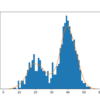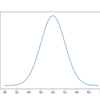Bayes Theorem provides a principled way for calculating a conditional probability. It is a deceptively simple calculation, although it can be used to easily calculate the conditional probability of events where intuition often fails. Although it is a powerful tool in the field of probability, Bayes Theorem is also widely used in the field of […]










